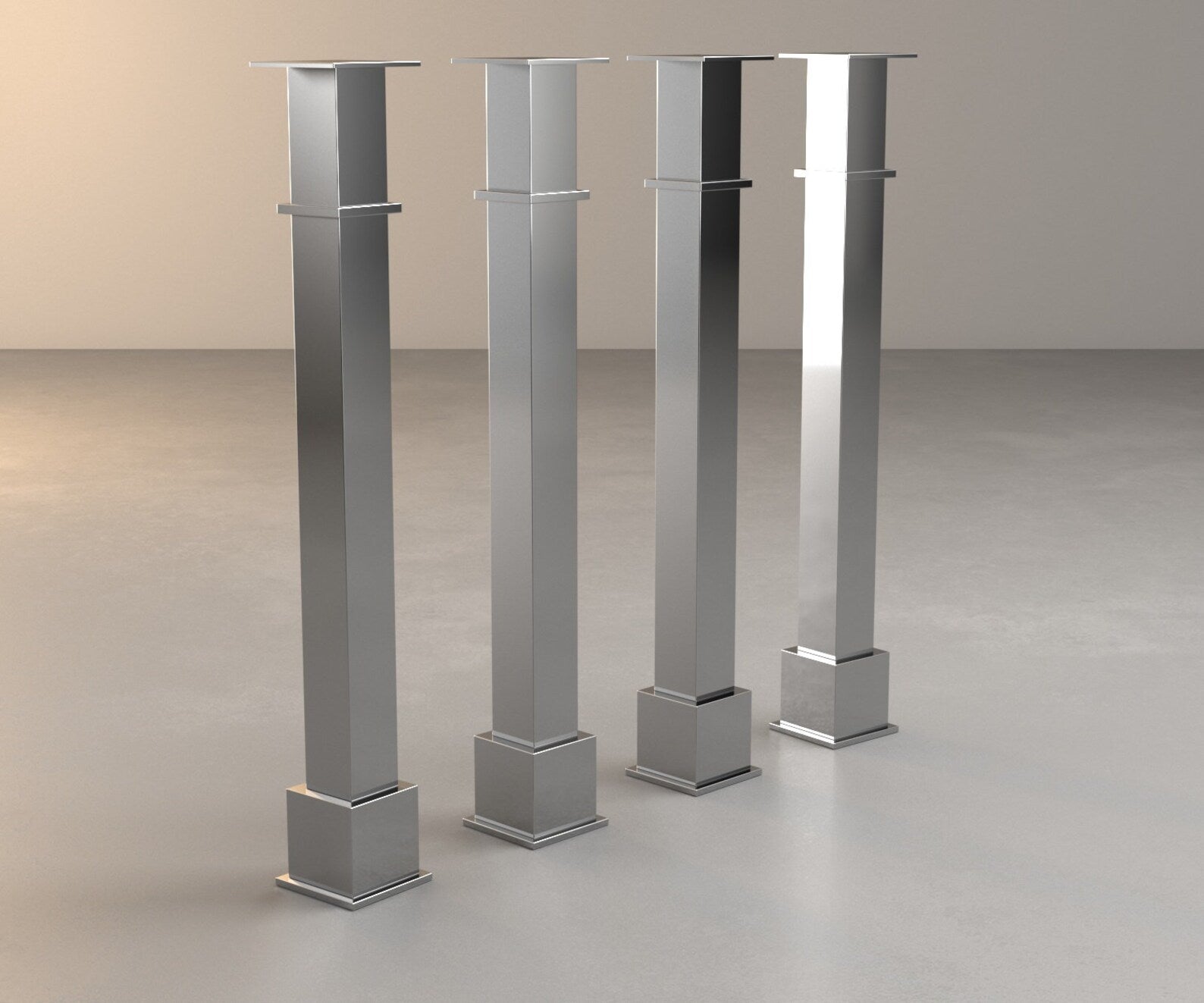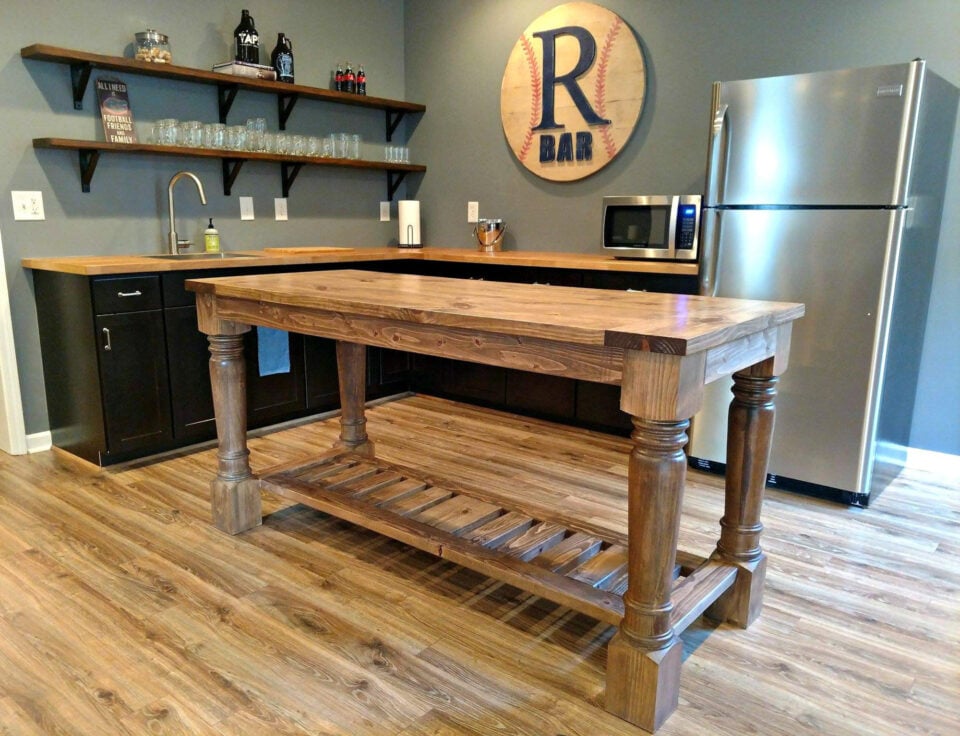Transform Your Area with Ingenious Kitchen Island Leg Styles
Transform Your Area with Ingenious Kitchen Island Leg Styles
Blog Article
How to Select the Perfect Kitchen Area Island Leg to Boost Your Kitchen Design
Picking the excellent cooking area island leg is a nuanced process that requires careful factor to consider of different aspects such as style performance, style, and material. A well-chosen leg can not just sustain the structure but additionally offer as a defining element that boosts the general aesthetic of your kitchen.
Assess Your Kitchen Design
When it comes to picking a kitchen area island leg, it's necessary to examine your kitchen area style to make certain a natural style. The kitchen area is often the heart of the home, and the island functions as a useful and aesthetic centerpiece. As a result, the selection of leg design must reflect the overall style of your cooking area, whether it be contemporary, typical, farmhouse, or industrial.
As an example, in a modern kitchen, streamlined, straight legs in a minimal design might improve the streamlined appearance. Conversely, a rustic cooking area may take advantage of hefty, turned legs that communicate warmth and personality. Think about intricately designed legs that resemble typical craftsmanship. if your cooking area features a classic decoration.
Pay focus to the proportions of both the island and the surrounding area; the leg's scale must complement the general dimensions. By straightening your leg option with your cooking area's style, you create a combined and inviting environment that reflects your individual aesthetic.
Take Into Consideration Product Options
Picking the ideal product for your kitchen island leg is crucial, as it impacts both longevity and aesthetic allure. Numerous materials provide unique benefits and can considerably influence the general layout of your kitchen.
Wood is a preferred choice, known for its warmth and convenience. It can be discolored or painted to match your cooking area's color design, providing a timeless look. It might call for even more maintenance to stop damages from moisture and warm.
Metal legs, such as stainless-steel or wrought iron, stimulate a industrial and contemporary feel. They are exceptionally durable and immune to damage, making them ideal for high-traffic locations. Steel can also be ended up in various methods, allowing for modification in regards to texture and shade.
Another option is composite products, which integrate aesthetics with functionality. These can imitate the look of timber or metal while often being lighter and much easier to keep.
Last but not least, consider rock legs, which can bring an extravagant touch however may require added structural support. Each product has its special qualities, so it's necessary to pick one that lines up with your kitchen area's overall layout vision while making sure durability and functionality.
Explore Layout Functions
Various design features can boost the performance and aesthetic appeal of a kitchen island leg, making it an essential part of the overall cooking area style. One crucial facet to think about is the style of the leg, which can range from conventional turned designs to streamlined, modern lines. The option of style should complement the existing cabinetry and components, producing a cohesive appearance.
In enhancement to design, the surface of the leg can considerably influence the cooking area's visual appeal. Alternatives such as painted, discolored, or natural coatings can either highlight the leg as a declaration piece or permit it to blend seamlessly right into the kitchen setting. Ornamental elements, such important link as makings or embellishments, can likewise include personality and originality, transforming an easy leg into a prime focus.
Moreover, incorporating useful features like open shelving or incorporated storage can enhance energy while keeping visual worth. The interplay of these layout includes not only boosts the kitchen area island leg's appearance yet additionally adds to the overall performance of the cooking area space. By thoughtfully picking these elements, property owners can guarantee their kitchen area island leg offers both useful and attractive purposes.
Determine Dimension and Elevation

Normally, the basic elevation for kitchen island legs is around 30 inches, which lines up with the height of basic kitchen counters and eating surfaces. If your island offers a double objective, such as a morning meal bar, you might consider a higher leg measuring 36 inches. kitchen island leg. go to this website This height promotes a more laid-back dining experience and fits bar feceses easily
In regards to size, the leg needs to not just provide adequate support but also maintain visual balance. A width of 3 to 5 inches is generally optimal, enabling for adequate stability without overpowering the overall design. Additionally, consider the spacing between the legs; they should be positioned to allow for easy movement and availability around the island.
Eventually, taking accurate measurements and considering the intended use the cooking area island will certainly assist you in choosing the suitable size and height of the legs, ensuring both visual appeal and useful performance in your kitchen style. kitchen island leg.
Budgeting for Your Choice

Following, establish the style that aligns with your kitchen area's aesthetic. Custom-designed legs may come at a costs, while pre-fabricated alternatives generally offer price financial savings. It's necessary to stabilize your preferred aesthetic with the practicalities of your spending plan.
Take into consideration added prices that might develop, such as setup or finishing. If you're planning to work with a specialist for setup, include these expenses in your budget.
Last but not least, allot a backup fund for unanticipated prices that might develop during the improvement. By carefully reviewing these variables, you can make educated decisions that not only boost your kitchen area's look these up design but also keep your renovation within economic reach. A well-planned spending plan will guarantee that you accomplish the preferred look without jeopardizing your economic objectives.
Conclusion
Finally, choosing the ideal kitchen area island leg requires careful consideration of various variables, including the total kitchen design, product options, style features, and suitable measurements. By aligning these aspects with the wanted aesthetic and performance, a unified and visually appealing kitchen area island can be accomplished. In addition, budgeting for the chosen materials and setup will certainly ensure that the choice procedure continues to be viable and practical, inevitably boosting the kitchen's design and functionality.
When it comes to picking a cooking area island leg, it's important to examine your cooking area design to ensure a cohesive style.Many layout features can enhance the performance and aesthetic allure of a kitchen island leg, making it an important part of the overall kitchen area layout. The interaction of these design includes not just elevates the kitchen area island leg's look however additionally contributes to the total performance of the cooking area room.Establishing a spending plan for your kitchen island leg is an essential action that can substantially impact your general kitchen remodelling prices.In conclusion, choosing the ideal kitchen area island leg demands mindful consideration of numerous elements, consisting of the overall kitchen area style, material alternatives, layout attributes, and suitable measurements.
Report this page